Simple Ways to Help Your Plants Survive Winter
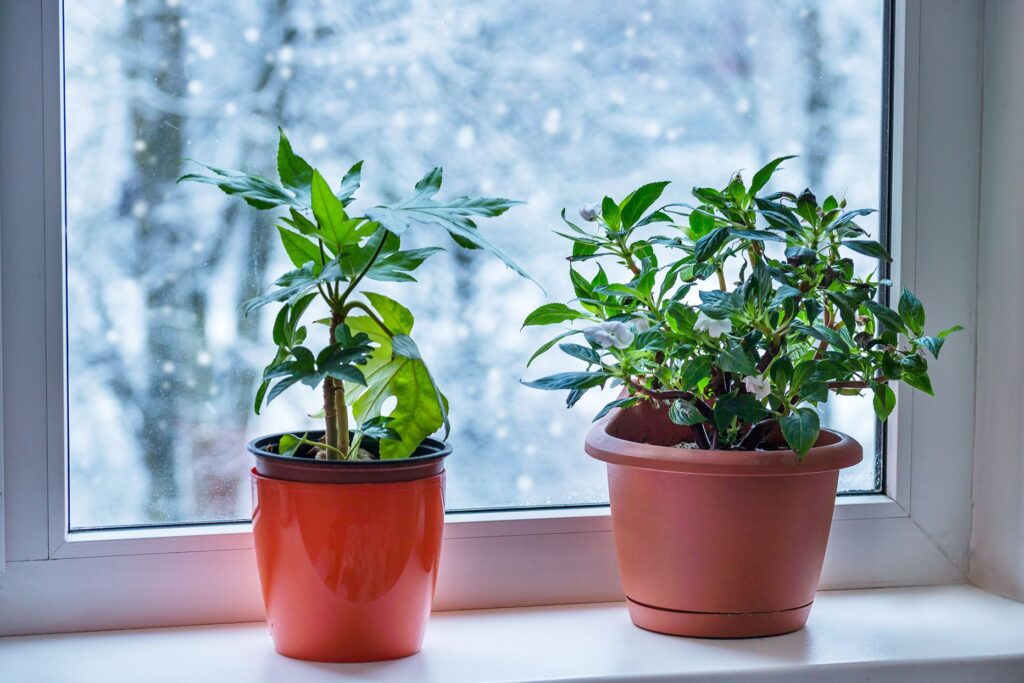
Introduction
Caring for plants isn’t the same year-round. As the seasons change, so do your plants’ needs. Fall and winter plant care requires a different approach than spring or summer. The cooler months bring unique challenges:
- Shorter days mean less natural light for growth.
- Cooler outdoor temperatures slow plant metabolism.
- Indoor heating systems create dry air, stressing houseplants.
- Dormancy cycles change how plants use water and nutrients.
Without proper adjustments, plants can struggle.
The good news? With a few simple changes, your plants can thrive. The right strategies will keep them strong and healthy until spring returns.
This guide will walk you through what you need to know about fall and winter plant care. By the end, you’ll have a seasonal care routine that supports your plants year-round.
Why Fall and Winter Plant Care Matters
When the seasons shift, plants feel it immediately. Understanding fall and winter plant care will help you keep your greenery thriving.
Seasonal Changes That Stress Plants
During fall and winter, plants face several natural challenges:
- Reduced sunlight: Shorter days mean fewer hours of photosynthesis, slowing growth. Some plants may even go dormant.
- Cooler temperatures: Outdoor plants are exposed to frost and freezing winds. Indoor plants deal with fluctuating room temperatures.
- Lower humidity levels: Heating systems dry out indoor air. It leaves tropical plants vulnerable to crispy leaves and dehydration.
- Soil moisture changes: Rain, snow, and cold slow down water absorption outdoors. Indoor soil dries at unpredictable rates.
Common Plant Problems in Cold Months
Without proper seasonal adjustments, plants often show signs of stress. You may notice:
- Yellowing or dropping leaves due to lack of light.
- Slowed or stopped growth as plants conserve energy.
- Pest infestations that thrive in warm indoor spaces.
- Root rot caused by overwatering when plants are using less moisture.
These problems are frustrating, but they’re preventable with proactive care.
Benefits of Adjusting Care Routines
Adapting your plant care to seasonal needs sets them up for long-term health. By practicing thoughtful fall and winter plant care, you’ll:
- Protect delicate roots from frost damage.
- Prevent diseases and pests before they spread.
- Support your plants’ natural dormancy cycles so they can conserve energy.
- Ensure they’re strong and ready to bounce back with fresh growth in spring.
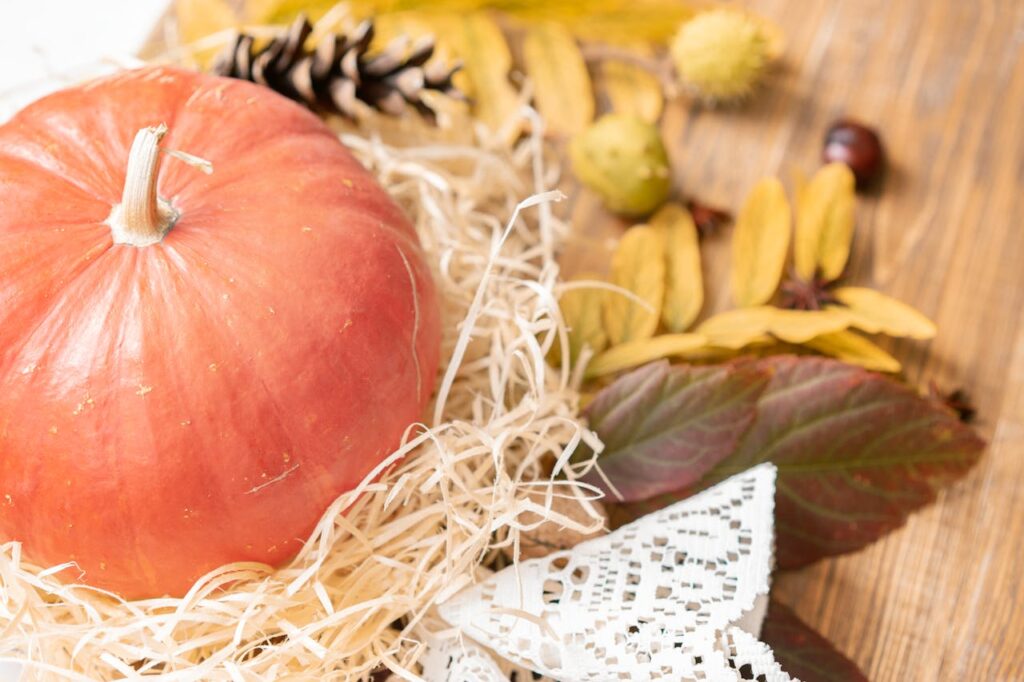
Fall Plant Care Tips to Prepare for Winter
Fall is the season of transition for plants. As the weather cools and daylight shortens. Your plants begin to prepare for dormancy. This is the time to set them up for success before the harsh conditions of winter. Following these fall plant care tips will help your garden. Your houseplants will move into the cold months with strength and resilience.
Transitioning Outdoor Plants Indoors
Fall is the time to bring your perennials, tropicals, or container plants indoors. Most houseplants can’t tolerate nighttime temperatures below 50°F (10°C). Waiting too long risks shock or frost damage.
Steps for a smooth transition:
- Inspect for pests: Check leaves, stems, and soil for spider mites, aphids, or mealybugs. Treat before moving indoors to prevent infestations.
- Acclimate gradually: Move plants to shaded areas outdoors for a few days. After a few days bring them inside. This helps them adjust to lower light levels.
- Choose the right spot indoors: Place your plants near bright windows. Avoid drafts or direct heat sources.
This careful transition ensures your plants adjust without stress.
Adjusting Watering in Fall
As days shorten, plants slow their growth. They need less frequent watering. Overwatering in this period is a common mistake that often leads to root rot.
Tips for watering in fall:
- Always check the top 1–2 inches of soil before watering.
- Water plants less often.
- Use pots with drainage holes to avoid soggy roots.
- Watch for signs of overwatering, like yellowing leaves or mushy stems.
Fertilizing in the Fall
Fall is generally the time to reduce or stop fertilizing. As plants enter dormancy, they no longer need high levels of nutrients. Feeding during this time encourage weak, leggy growth.
Exceptions:
- Winter-blooming plants (like Christmas cactus or orchids) may enjoy light feeding.
- If a plant shows signs of nutrient deficiency, use a diluted fertilizer.
The key is moderation—focus on supporting natural cycles, not forcing growth.
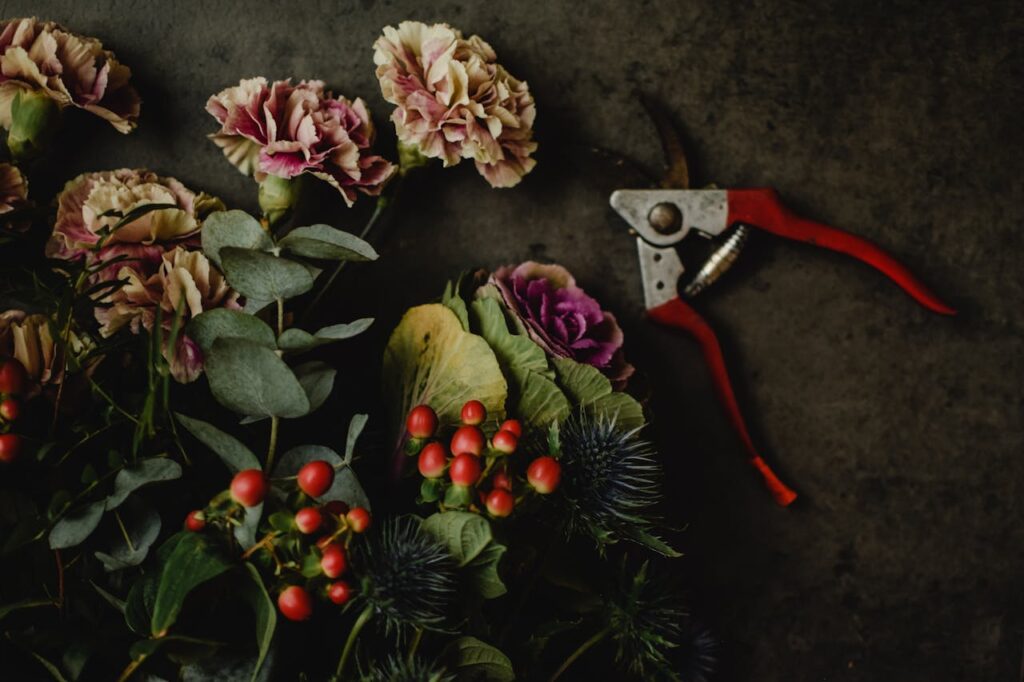
Fall Pruning and Cleaning
A little maintenance in the fall goes a long way toward preventing winter plant problems.
- Prune dead or damaged growth: This reduces the risk of disease and pests.
- Cut back perennials: Trim stems to above ground level once frost kills them back.
- Clean up garden debris: Fallen leaves, and decaying material harbor pests and fungi.
- Sanitize pots and tools: Washing pots and pruning shears prevent spreading diseases indoors.
A tidy garden and healthy pruning routine prepare plants to rest through winter. It aids a strong return in spring.
Quick Fall Prep Checklist:
- Bring tender plants indoors before the first frost.
- Reduce watering as growth slows.
- Stop or limit fertilizer use.
- Prune dead growth and clean up debris.
- Sanitize pots and tools.
Indoor Plant Care During Winter
Once winter arrives, most of your attention will shift indoors. Houseplants face unique challenges during the cold months. By adjusting your routine, you can keep them healthy, vibrant, and ready for new growth in spring.
Light Requirements in Winter
Shorter days and weaker sunlight make winter a tough season for plants. Without enough light, they become leggy, pale, or stop growing altogether.
Ways to maximize light exposure:
- Move plants closer to windows: South- or west-facing windows provide the best light.
- Rotate plants weekly: Ensures all sides receive light equally.
- Clean dusty leaves and windows: Even a thin layer of dust can block valuable sunlight.
- Use grow lights: Full-spectrum LED grow lights are affordable and mimic natural daylight. They are perfect for low-light rooms.
Fact: Most houseplants need at least 6–8 hours of light daily, even in winter.
Watering Plants in Winter
Watering mistakes are the number one cause of houseplant problems in winter. Growth slows during colder months, meaning plants need much less water.
Best practices for winter watering:
- Check soil first: Stick your finger 1–2 inches deep. Only water if it feels dry.
- Water less often: Allow water to run through drainage holes, then empty saucers.
- Use room-temperature water: Cold water can shock roots.
- Watch for warning signs: Yellow leaves and soggy soil indicate overwatering. Dry, crispy edges suggest underwatering.
Think “slow and steady.” Plants prefer slight dryness between waterings in winter.
Managing Humidity Levels
Indoor heating systems can reduce humidity to as low as 20%, far below the 40–60% most houseplants prefer. Low humidity causes browning leaf tips, leaf drop, and pest problems.
Easy ways to raise humidity:
- Place plants on pebble trays filled with water.
- Group plants together to create a natural humidity pocket.
- Run a humidifier in the room.
- Mist plants (but avoid overdoing it to prevent fungal issues).
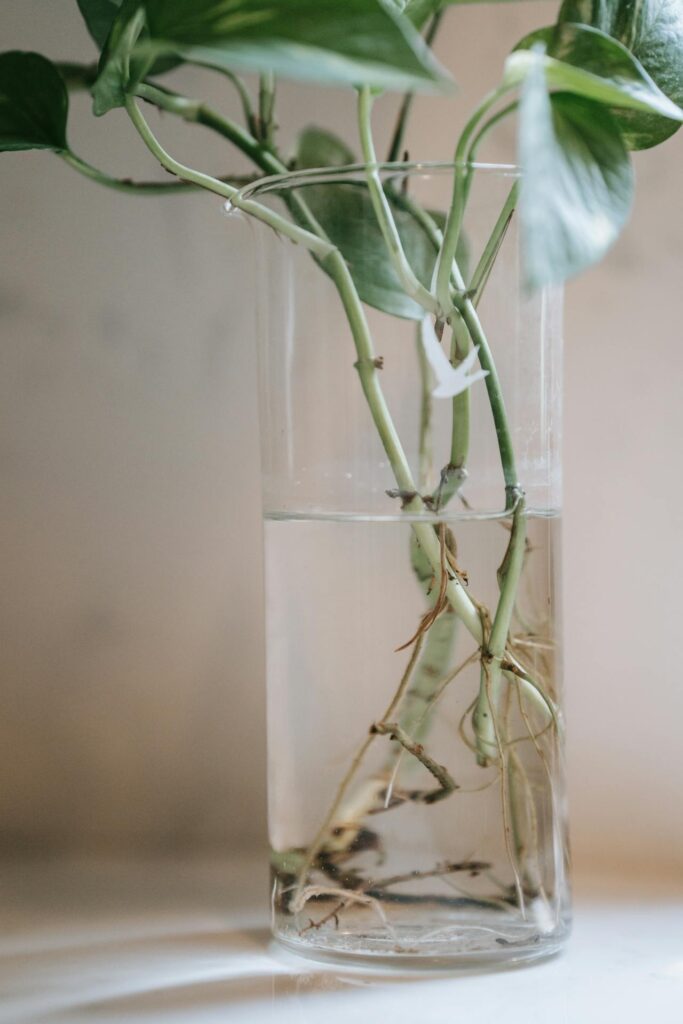
Temperature Considerations
Plants are sensitive to sudden temperature changes. Drafts, heat vents, and cold windowsills can all cause stress.
Tips for stable temperatures:
- Keep most houseplants between 65–75°F (18–24°C) during the day and slightly cooler at night.
- Avoid placing plants near radiators, fireplaces, or where cold air seeps in.
- For tropical plants, consider moving them to bathrooms or kitchens. They have higher humidity and warmth.
Consistency is key—plants handle steady conditions far better than frequent fluctuations.
Quick Indoor Winter Care Checklist:
- Move plants to the brightest spots in your home.
- Rotate them weekly for even growth.
- Water thoroughly.
- Increase humidity with trays, grouping, or humidifiers.
- Keep temperatures stable and draft-free.
Plants will stay strong and healthy by fine-tuning light, water, humidity, and temperature.
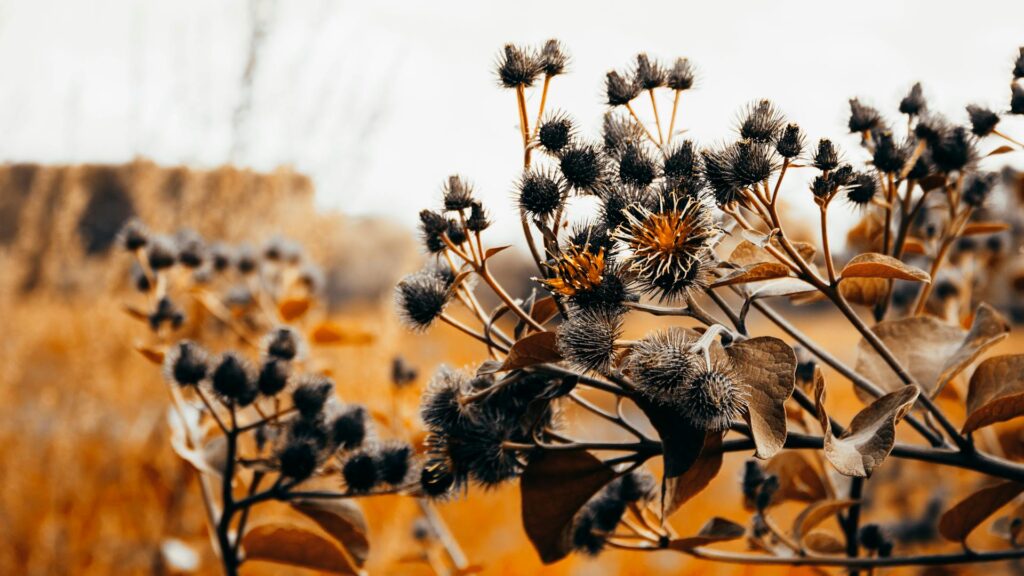
Outdoor Plant Care in Winter
The plants need protection from freezing temperatures, strong winds, and fluctuating conditions. With proper outdoor plant care your trees, shrubs, and perennials survive until spring.
Protecting Perennials and Shrubs
Perennials and shrubs are hardy plants. They benefit from extra protection during harsh winters. Cold winds, frost, and dry conditions can damage even the toughest plants.
Best practices for protecting perennials and shrubs:
- Mulch: Add a 2–4-inch layer of mulch around the base of plants. This insulates roots, regulates soil temperature, and conserves moisture.
- Use burlap wraps: Wrapping shrubs, especially evergreens, with burlap shields them from windburn and heavy snow.
- Water before the freeze: Ensure soil is well-watered before the ground freezes, as dry roots are more likely to suffer damage.
- Cut back perennials: Trim back dead stems once frost kills the foliage. This prevents pests and disease from overwintering.
Tip: Avoid piling mulch against stems or trunks, as it can encourage rot and pests.

Caring for Trees in Winter
Trees may look sturdy, but they also face winter stress. Young or newly planted trees are especially vulnerable.
Steps for winter tree care:
- Water in late fall: Give trees a good soaking before the ground freezes. This provides stored moisture for the winter months.
- Protect young trunks: Wrap thin-barked trees with tree guards or plastic. It will prevent frost cracks and rodent damage.
- Prune: Winter is an excellent time for pruning dormant trees. Remove dead or crossing branches to improve structure and health.
- Shield from heavy snow: Brush off heavy snow from branches . Avoid shaking, as brittle branches may snap.
Fact: Trees lose up to 90% of their water through their roots in wintering. Fall watering is critical for their survival.
Winter Lawn and Garden Care
Don’t forget your lawn and garden beds during winter. What you do in the cold months affects how they bounce back in spring.
Winter lawn care tips:
- Keep grass around 2–3 inches tall going into winter. Too short weakens roots; too long increases snow mold risk.
- Limit foot traffic on frozen or snow-covered lawns to avoid compaction and damage.
- Rake up excess leaves before snow to prevent mold and suffocation.
Winter garden care tips:
- Add compost or organic matter to raised beds before the freeze. This enriches the soil and improves structure for spring planting.
- Cover empty beds with mulch or a cover crop to reduce erosion and nutrient loss.
- Protect bulbs and root vegetables with straw or mulch if left in the ground.
Quick Outdoor Winter Care Checklist:
- Mulch perennials and shrubs.
- Wrap young shrubs and tree trunks.
- Water before the ground freezes.
- Prune dormant trees.
- Prepare lawn and garden beds for spring.
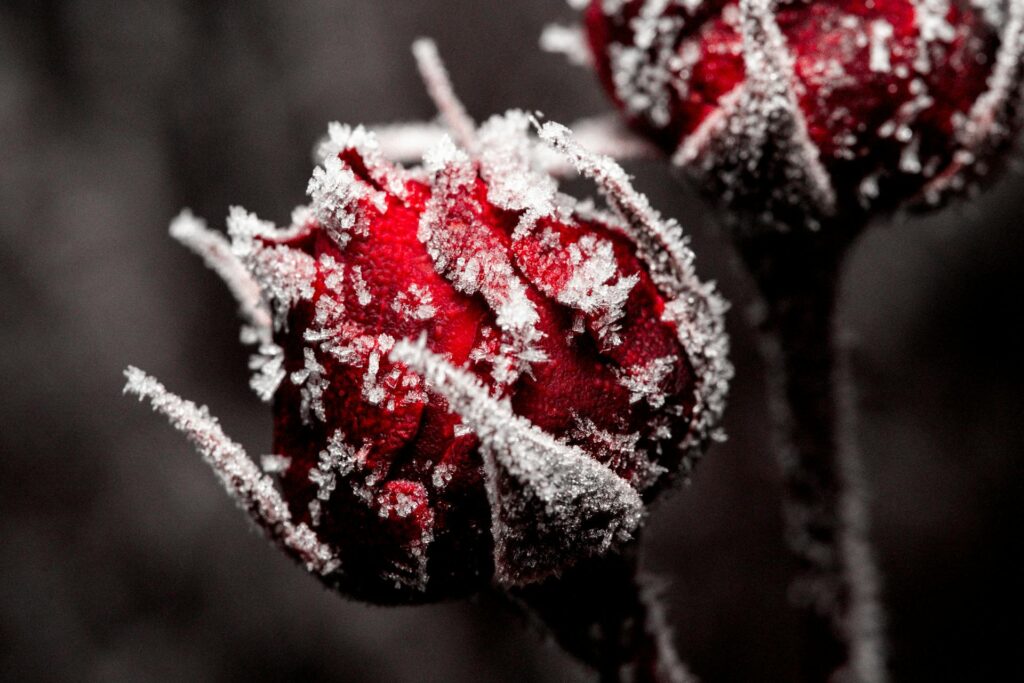
Common Fall and Winter Plant Care Mistakes to Avoid
Fall and winter plant care is less about doing more and more about adjusting routines. It will save your plants from unnecessary stress and keep them thriving until spring.
Overwatering Due to Slower Growth
When light and temperatures drop, plants slow down. They use less water, but many plant owners keep watering on a summer schedule. The result? Root rot—a silent killer.
How to avoid it:
- Always check soil moisture before watering.
- Let the top layer of soil dry out first.
- Water less often, but make sure each watering is thorough.
Think of watering as a balance: too little stresses the plant, but too much suffocates the roots.
Using Fertilizer When Plants Are Dormant
Dormancy is nature’s way of letting plants rest. In fall and winter, most plants don’t need fertilizer. Feeding them now often forces weak, leggy growth that drains energy.
Exceptions:
- Plants like Christmas cactus, cyclamen, or winter-blooming orchids can benefit from light feeding.
- If your plant is producing new growth indoors, a diluted fertilizer may help.
Otherwise, save the nutrients for spring when plants wake up hungry.
Ignoring Indoor Pests
Dry air and weaker plants create the perfect environment for pests. These tiny invaders thrive indoors during winter.
Prevention tips:
- Inspect plants weekly—look under leaves and near soil.
- Quarantine new or recently moved plants before placing them with others.
- Wipe leaves with a damp cloth or insecticidal soap if pests appear.
- Keep air circulating to discourage infestations.
Exposing Plants to Drafts or Heat
One of the most overlooked mistakes is plant placement. Indoor plants sit near windows, doors, or heating vents—spots that swing from freezing cold to dry, hot air. These sudden changes cause stress, leaf drop, and even death.
How to protect plants:
- Keep them away from drafty doors and cold windowsills.
- Don’t place pots next to radiators, fireplaces, or vents.
- Use sheer curtains to buffer cold glass if plants must stay near a window.
Quick “Mistakes to Avoid” Recap:
- Overwatering when growth slows.
- Feeding plants during dormancy.
- Ignoring indoor pests.
- Placing plants in drafty or overheated spots.
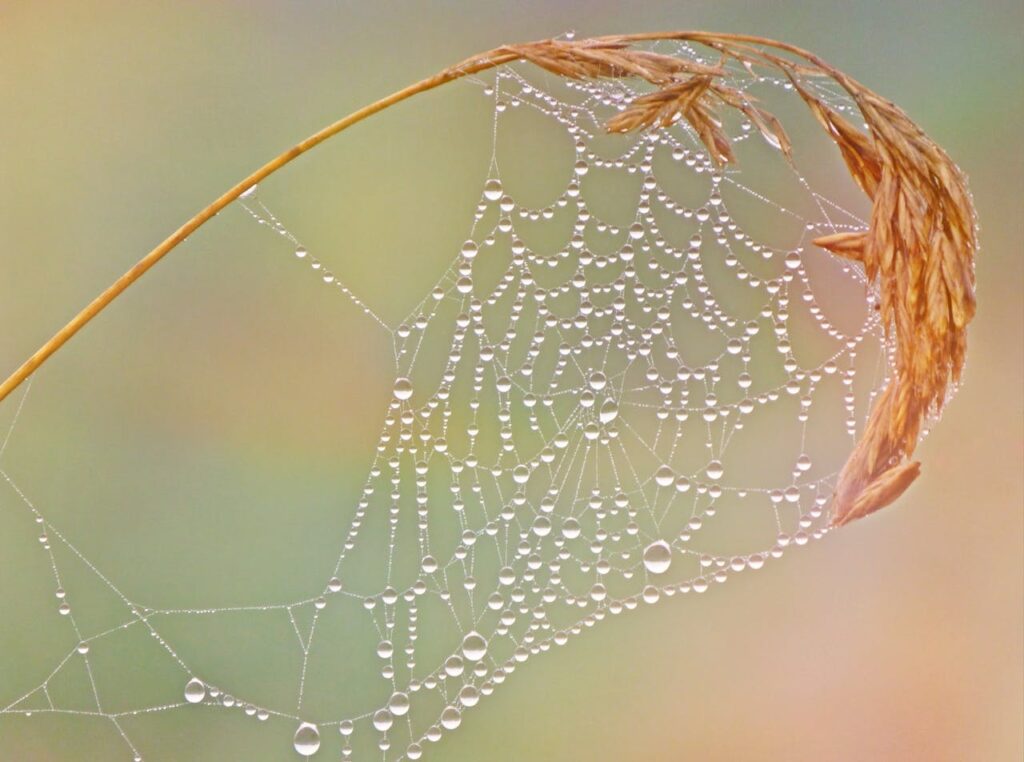
Seasonal Plant Care Checklist
A clear, seasonal checklist makes fall and winter plant care much easier to manage. Think of it as your roadmap for keeping both indoor and outdoor plants healthy. By following these steps, you’ll cover the essentials without second-guessing yourself.
Fall Plant Care To-Do List
Fall is the season of preparation. Your goal is to transition plants from active summer growth into winter dormancy.
Checklist for fall:
- Bring plants indoors before frost: Tropical plants, succulents, and perennials should move inside. It is time when nighttime temps drop below 50°F (10°C).
- Check for pests: Inspect and treat before bringing plants indoors.
- Reduce watering: Slow down your schedule as plants use less moisture.
- Stop or reduce fertilizer: Let plants rest without forcing new growth.
- Prune and clean up: Trim dead or diseased growth and clear garden debris.
- Mulch perennials and shrubs: Protect roots with 2–4 inches of mulch.
- Deep water trees and shrubs: Give them a final soak before the ground freezes.
By completing these steps in the fall, you’ll prevent winter stress and reduce problems later.
Winter Plant Care To-Do List
Once winter sets in, the focus shifts to maintenance. Plants won’t grow much, but they still need consistent care.
Checklist for winter:
- Maximize light: Move plants near south- or west-facing windows. Always rotate weekly, and use grow lights if needed.
- Water : Always test soil before watering; avoid soggy roots.
- Increase humidity: Use pebble trays, grouping, or humidifiers to combat dry indoor air.
- Watch temperature: Keep plants away from drafts, heat vents, and cold windowsills.
- Watch for pests: Inspect weekly for spider mites, scale, and gnats.
- Protect outdoor plants: Check mulch coverage, and inspect tree wraps. Brush heavy snow off shrubs.
- Limit lawn and garden traffic: Avoid compacting frozen soil.
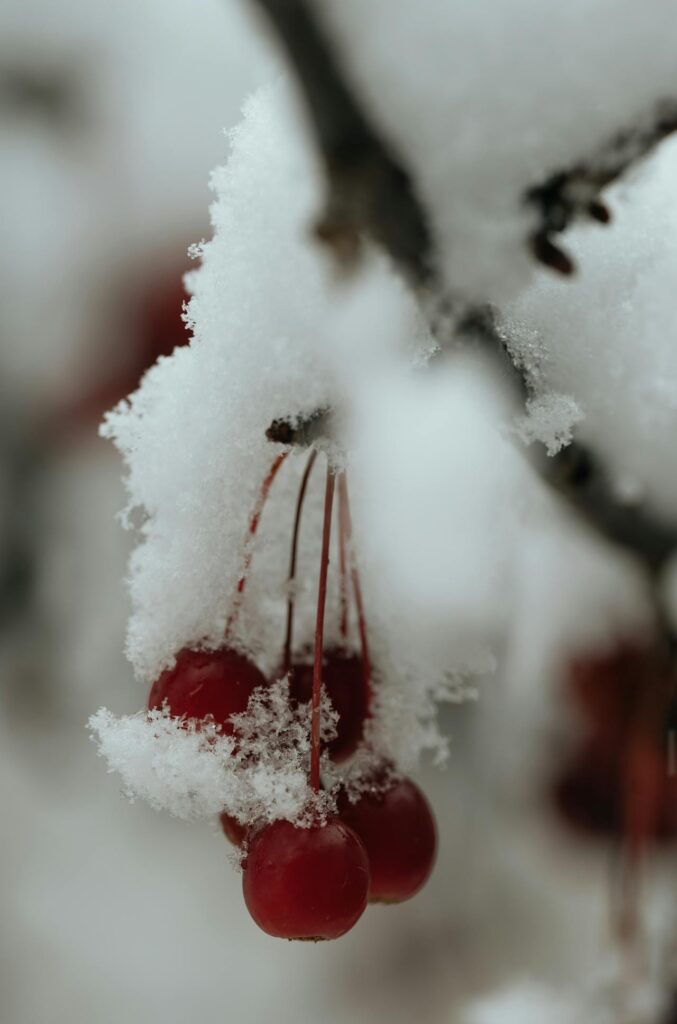
Conclusion: Mastering Fall and Winter Plant Care
Caring for plants through fall and winter may feel challenging. The right adjustments make it manageable—and rewarding. By tailoring your routine to the seasons. You give your plants the support they need to survive the cold months and thrive again in spring.
Here’s a quick recap of the key takeaways from this guide on fall and winter plant care:
- In the fall: Transition outdoor plants indoors. Reduce watering, pause fertilizing, and prune dead growth. Always mulch outdoor beds to protect roots.
- In the winter: Focus on light, humidity, careful watering, and temperature stability. Indoors, watch for pests and adjust placement. Outdoors, protect shrubs, trees, and lawns from frost and snow damage.
- Avoid mistakes: Overwatering, overfeeding, ignoring pests. are killers. Exposing plants to drafts or heat are common errors.
With these practices, your plants will “make it through” winter. Your plants will rest, recharge, and emerge healthier when the growing season returns.
If you want your garden and houseplants to flourish year-round. The secret lies in observation and adaptation. Watch your plants, learn their signals, and adjust as needed. The more consistent and attentive you are, the better your results will be.
Ready to take your plant care knowledge further? Explore more seasonal guides and practical tips on PlantLoverU.com. There you’ll find everything you need to keep your plants thriving all year long.